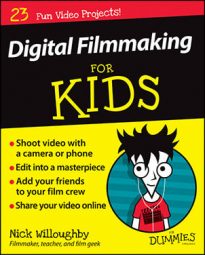There are different styles and ways to present information in a documentary. The style you choose for your digital film should depend on the way you think the information should be presented and the style you think would best suit the audience you’re aiming at. The following list explains more about the different styles you can use within your documentary film:
Direct: A traditional way of presenting information usually using a voiceover to explain to the audience directly what’s being shown onscreen. Wildlife documentaries are normally shot this way. This style is not the most creative way of shooting a documentary, but it’s a simple and effective way of presenting information to an audience.
Fly‐on‐the‐wall: This style of documentary filmmaking is mainly used to present events or real-life situations in which the camera follows someone around. In this style, most of the story is told through the subjects. Fly‐on‐the‐wall filmmakers often use smaller cameras with onboard sound so they can blend more easily into a situation without causing too much of a distraction. Because this style doesn’t normally include a voiceover to guide the audience through the story, audience members are left to make up their own minds about the topic or situation being filmed.
Interactive: This style uses interviews from the subjects involved in the story. Subjects are asked questions about the story, and their answers are used to tell the story in the film. Usually the interview questions are cut out to make it seem as though the subject is telling the story directly to the audience. The interactive style is often used within other styles of documentary making.
Presented: In this style of documentary filmmaking, the filmmaker (or another person) presents the story to the camera. The presenter becomes part of the film and guides the audience through the story and interviews people along the way. Often the presenter’s feelings and emotions about the topic are shown through this method of documentary filmmaking.
You don’t have to stick within one style, of course. You can blend or mix different styles within your film, which can be more engaging for your audience.

